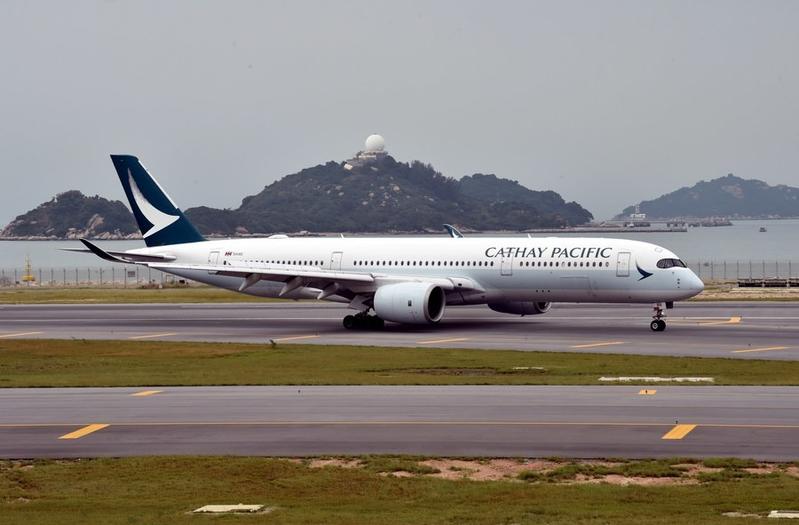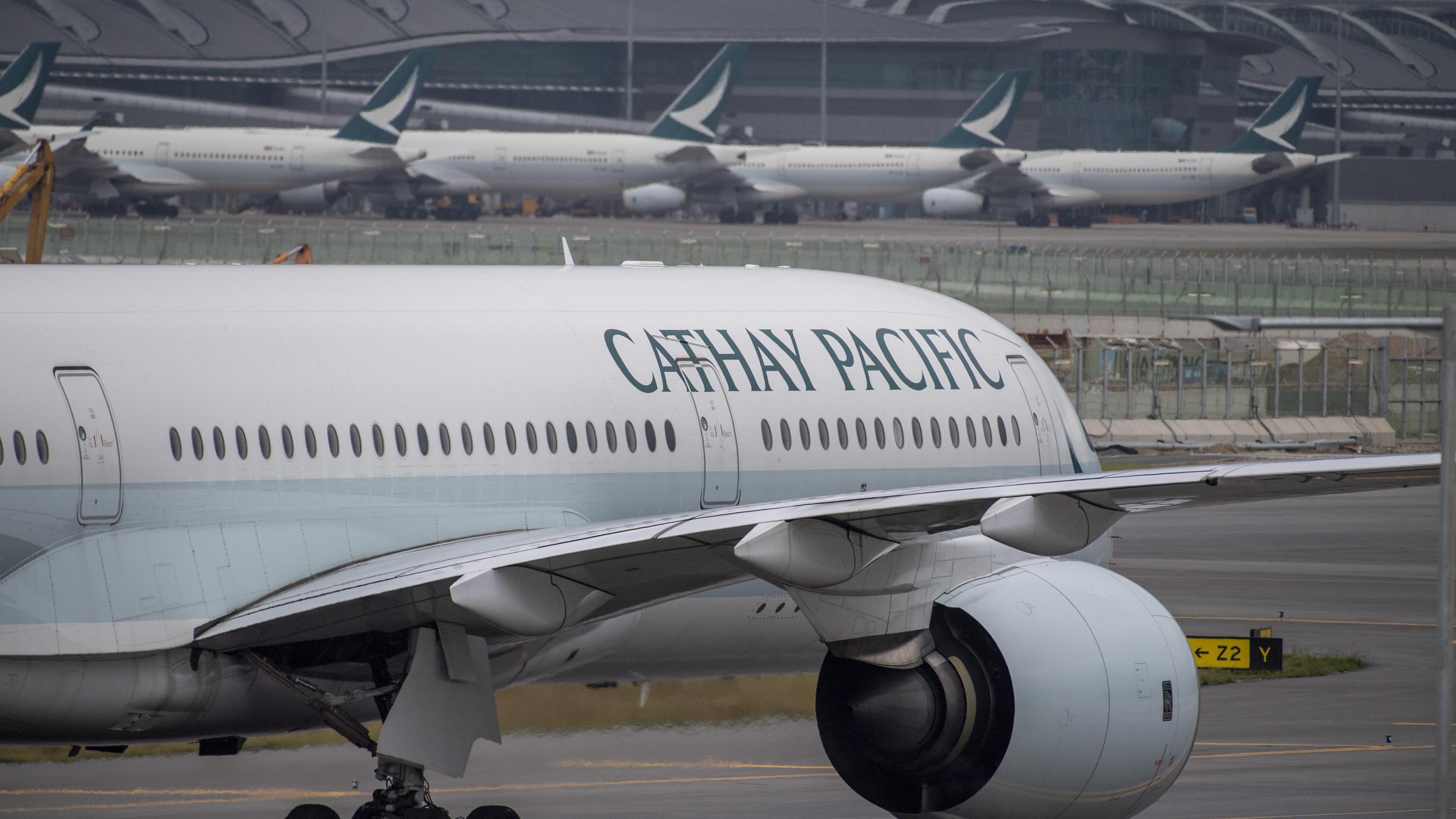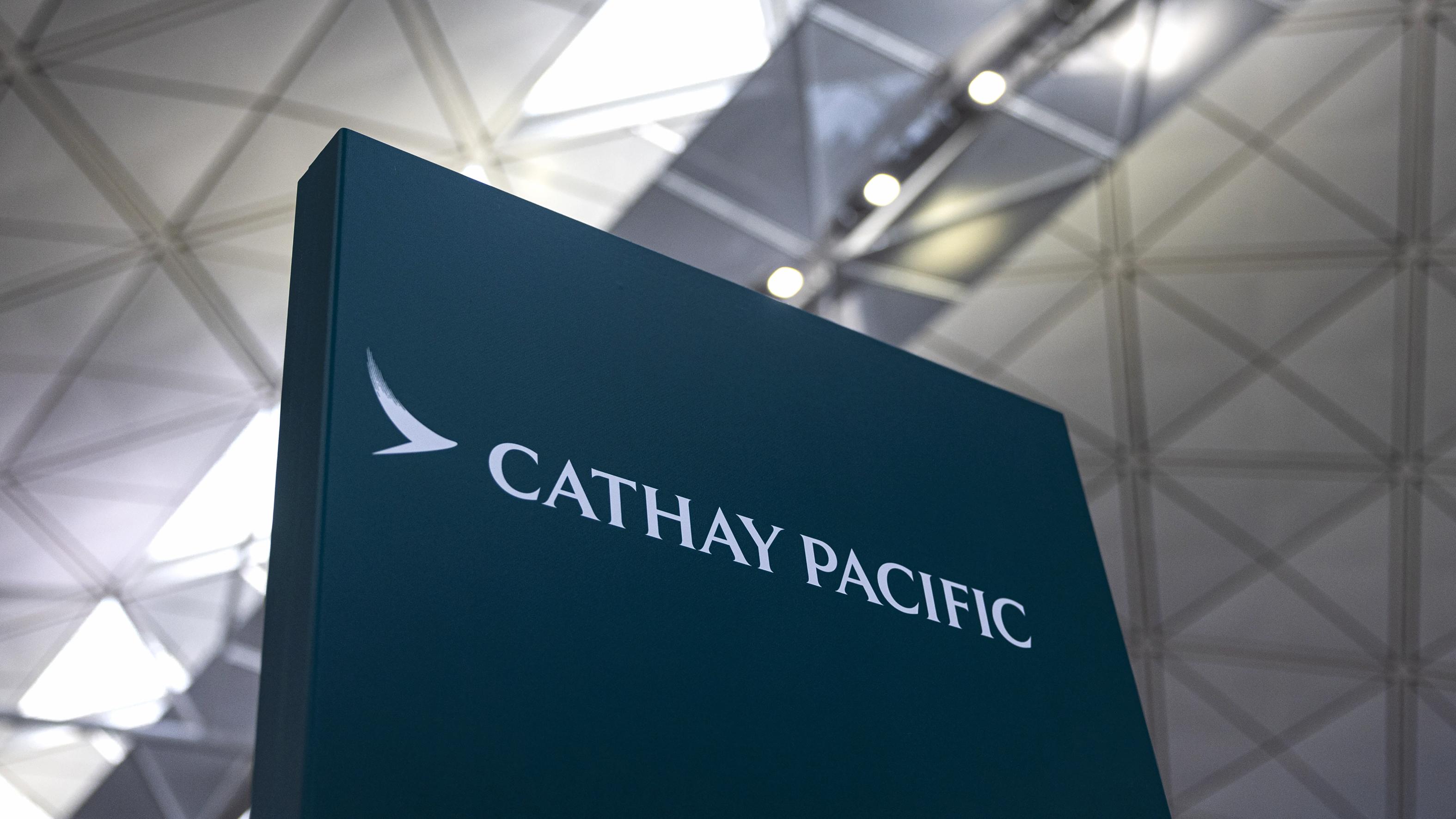 In this file photo taken on Nov 25, 2022, a Cathay Pacific passenger plane lands on the third runway at the Hong Kong International Airport. (PHOTO / XINHUA)
In this file photo taken on Nov 25, 2022, a Cathay Pacific passenger plane lands on the third runway at the Hong Kong International Airport. (PHOTO / XINHUA)
After a lull in business due to scant demand and drastic headcount reductions because of COVID-19 quarantine restrictions, Hong Kong’s flagship carrier Cathay Pacific Airways has renewed hope with an exceptional performance during the first half of 2023.
“The Cathay Group has seen a strong rebound in the performance of our airlines. Our cash flow has continued to improve; further to being overall operating cash generative in 2022, the Group has been operating cash generative so far in 2023,” said Lavinia Lau, chief customer and commercial officer of Cathay Pacific Airways.
The enduring pandemic grounded the airline’s business, forcing it to park 70 unused planes in Australia in 2020 and lay off 5,300 Hong Kong-based employees.
The airline carried about 6.3 million passengers in the first five months of 2023, compared with 185,000 for the corresponding period last year. Last month, 1,417,906 passengers flew, an increase of 2,345 percent compared with May 2022.
I’m anticipating a solid recovery of Cathay Pacific Airways from the fallout, and it could get back on its feet fully. I’m very upbeat to see our Hong Kong brand reemerging.
Timothy Chui Ting-pong, Executive Director, Hong Kong Tourism Administration
“Although demand reduced temporarily following the Easter holiday peak, it picked up again over the Buddha’s Birthday holiday weekend towards the end of May, with travel to Japan and Thailand being particularly popular. Transit traffic via the Hong Kong hub was also encouraging with considerable demand to and from the Chinese mainland,” said Lau.
Overall revenue passenger kilometers jumped sharply across all regions, with South Asia, the Middle East and Africa; and Northeast Asia registering skyrocketing increases of over 21,000 percent. In terms of capacity, the most exceptional increases in available seat kilometers also stem from the two regions — 6,832.6 percent and 5,781.6 percent respectively.
“May was another good month for our travel business. We continued to progressively increase our passenger flight capacity and added more frequencies to popular destinations in the US, South Asia and Japan,” added Lay in the statement released on Thursday.
The resumption of exports and imports has beefed up the airline operation. It’s projected that the airline carried 109,834 tonnes of cargo last month, an increase of 18.8 percent compared with May 2022, when its cargo capacity shrunk significantly because of stricter aircrew quarantine measures.
ALSO READ: After 3 years, Cathay sees profit for H1 as demand rebounds
“Turning to our cargo business, market volume remained largely flat in May. High-tech demand and new consumer product shipments continued to underperform due to elevated inventory levels. However, the e-commerce market remained relatively active, and in the special solution segment, aircraft engine volumes improved as passenger services resumed,” said the statement.
The airline management’s optimism, however, provided a stark contrast with the views of some investors. Citi Research noted that the airline is “seen as a potential laggard and has been on investors’ radars”. The broker cited market concerns including increased capacity, competition from Greater Bay Airlines and a big hit from a markedly weaker air cargo performance.
Citi said it believed that the airline’s share of seat capacity at Hong Kong International Airport has remained relatively stable in the mid-50 percent level, since the outbreak of COVID-19, as it lowered Cathay Pacific’s core profit forecast for 2023 and 2024 by 0.7 percent and 7 percent respectively, and reduced its target price from $10.55 to $9.57.
 In this file photo dated Nov 25, 2022, a Cathay Pacific airplane taxis at Hong Kong International Airport in Hong Kong. (PHOTO / AP)
In this file photo dated Nov 25, 2022, a Cathay Pacific airplane taxis at Hong Kong International Airport in Hong Kong. (PHOTO / AP)
As the summer season is approaching, students returning to Hong Kong and the continuous influx of Chinese mainland tourists will prompt a boost and lasting zest to its revenue, said Timothy Chui Ting-pong, executive director of the Hong Kong Tourism Administration.
Captivating high-speed train
The tourism chief observed that the number of high-speed rail passengers commuting between Hong Kong and mainland cities has been climbing consistently, which suggests that trains are seen as a favorable and an economic — time- and money-wise — alternative to flights.
The proportion of mainland tourists who take high-speed trains has increased by 20 percent over the past five months, and overnight train travelers, with the demographic leaning toward young people, are setting a new trend, said Chui.
ALSO READ: Cathay to hire cabin attendants from mainland from July
“This is especially true for short- and middle-distance trips of four to six hours between mainland cities, such as Xiamen, Wuhan, Guilin … and Hong Kong. High-speed rail, in this case, is a prime option,” steering potential consumers away from airlines, he said.
Increasing its appeal and popularity with mainland tourists, high-speed rail continues to extend its service network, Chui said, adding that the planned expansion of services to cover Chengdu from July 1 is a case in point. If it continues such ambitious expansion, it will definitely stunt Hong Kong airlines’ revenue growth, he said.
 A signage for Cathay Pacific Airways at the departures hall of Hong Kong International Airport in Hong Kong, on March 8, 2023. (PHOTO / AP)
A signage for Cathay Pacific Airways at the departures hall of Hong Kong International Airport in Hong Kong, on March 8, 2023. (PHOTO / AP)
“It’s a wake-up call to our airline companies to catch up with swift actions to expand their routes to secondary cities, which could ease mainland and foreign travelers’ entry to the mainland via Hong Kong. In that way, Hong Kong could fulfill its role as a key transport hub expected in our country’s 14th-Five Year Plan (2021-25) and national blueprints.
“Rail and air travel should complement each other, and chart new courses in tandem,” Chui said.
READ MORE: Cathay Pacific scandal widely condemned
Looking “back to pre-pandemic times, at least a third of Cathay Pacific’s passengers were from the mainland who traveled in Hong Kong or transferred here,” Chui said. Recent scandals and negative sentiment about Cathay Pacific, provoked by its cabin crew members ridiculing a mainland passenger’s level of spoken English, could be an excruciating blow to their faith in the airline, dissuading them from choosing to fly with it, Chui said.
But as a Hong Kong person, and a practitioner in Hong Kong’s tourism sector, Chui said optimistically: “I’m anticipating a solid recovery of Cathay Pacific Airways from the fallout, and it could get back on its feet fully. I’m very upbeat to see our Hong Kong brand reemerging.”


